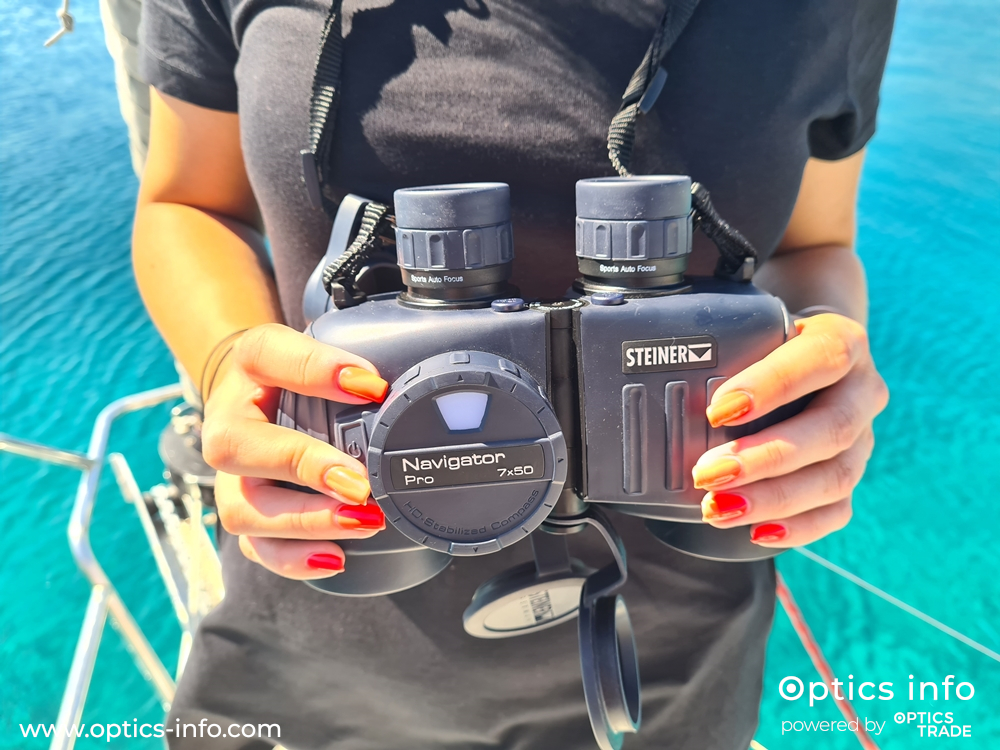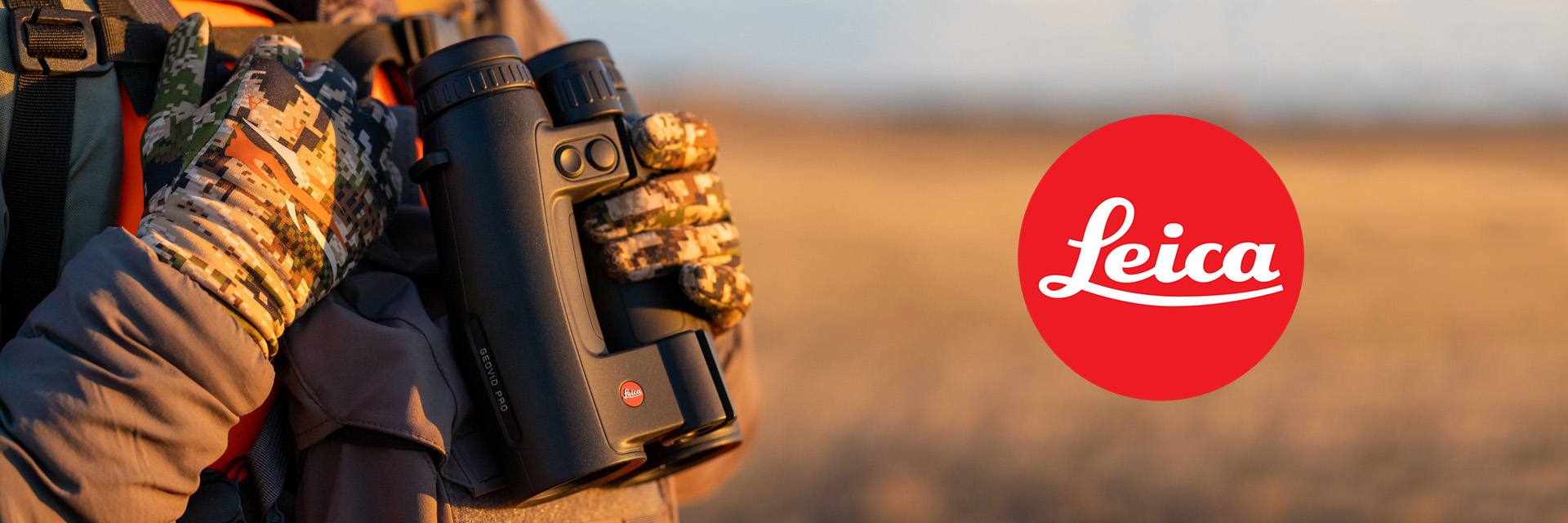Introduction
Binoculars are an indispensable piece of equipment for sailing. It is extremely useful to have them at hand – it helps you identify distant objects (possibly a dangerous rock or a buoy), but you can also use them for recreational purposes such as observing the marine life on the sea surface, birds, nearby islands/land and other interesting things associated with the sea.
This year (2020), we chose the Croatian region of Dalmatia for our sailing trip. This was a perfect opportunity to put one of the marine binoculars to the test. I chose one of the most popular – Steiner Navigator Pro with Compass. Navigator Pro is less sophisticated than Steiner’s flagship Commander binoculars, but as an amateur sailor (Commander is aimed at professionals) I found these to be a perfect choice. This is the third generation of these binoculars (the first one was called Navigator, the second one Navigator XP).

What are the most important features to look for in marine binoculars?
What are the most useful things that one should look for in marine binoculars? Well, since there is water all around you most of the time during a sailing trip, waterproofness is an essential feature. Make sure to wear them on a neck strap when using them as that will greatly minimize the chances of them falling into the water. A floatable neck strap is an ideal solution, but it is not always included. If it is available as an accessory, do not hesitate to invest in it; not only will it prevent binoculars from sinking if they fall into the water but also make them visible from afar thanks to its vibrant colour (most often yellow).

Experience has shown that the perfect magnification for marine binoculars is 7x. As it is difficult to maintain a steady image on a moving sailboat, any magnification greater than that would greatly increase the chance of the observer becoming seasick. The 7x magnification is most often combined with a 50mm objective lens, making the 7×50 a marine binoculars’ standard.
I found Steiner Navigator Pro with Compass to be an excellent example of quality, affordable marine binoculars, which is why I chose them to be my companion for the trip. How did they fare? Who, if not Steiner, an old hand at manufacturing marine binoculars, understands what mariners need? So, how did they perform? Read on to find out.

Steiner Navigator Pro – an indispensable piece of equipment at sea
I chose the standard, 7×50 model for the trip, equipped with a compass. The version without the compass is also available. If these binoculars are too bulky for you, you can go for the smaller ones – 7×30 and 7×30 with compass. Smaller objective lenses will not ruin the optical experience for you as these binoculars are mostly used during the day – the diameter of the objective lens is not as important as the magnification – 7x is perfect for marine use. When the waters are rough, make sure to hold onto something for better steadiness. If you plan on using these binoculars in the evening/at night also, go for the bigger version.

The binoculars are built like a tank, which is important. Those who have ever gone sailing know that it is almost impossible to get back without a few bruises – there is plenty of action when the sails are up, and the interior is crammed in places, especially on smaller sailboats. When moving around with these binoculars around your neck, you can quickly hit them against something. Navigator Pro handles the impacts well thanks to the thick, dark-blue rubber armour that surrounds the polycarbonate housing. The objective lens caps are connected to the housing with a rubber strap, so you do not have to worry about losing them, while the ocular cover can be connected to the neck strap for the same purpose. The floating prism system, as Steiner names it, features a silicone lens mount which absorbs shock, further protecting the binoculars from damage. The construction is said to withstand 11 Gs of impact. The protruding lines on the rubber armour ensure a good grip during observations, a feature that you will cherish especially when the sailboat is in movement.

Most marine binoculars on the market are of a traditional shape, measuring more in width than in length. Navigator Pro is no exception. The binoculars are shaped this way because of the Porro prisms used inside. Porro prism binoculars ensure a better light transmission rate and a greater depth perception but are bulkier and heavier than roof prism binoculars. While roof prism binoculars almost exclusively feature a central focusing mechanism, Porro prism ones are often equipped with a focusing mechanism separated for each eye – Navigator Pro is among them. There are several advantages that such a system boasts. The focus is set once by turning the ring on both eyepieces – from then on, you focus the image with your eyes only. Not having to constantly turn the central focusing knob is important for marine use where you are in constant movement. Furthermore, waterproofness is much easier to achieve with a focusing separated for each eye as this mechanism is less exposed. Steiner calls their mechanism Sports-Auto Focus™. It is difficult to focus the image on distances closer than 20 m, but these binoculars are not meant for close-range observations.


Optically, the binoculars are great for the price. The image seen through the optics is high in contrast and full of vibrant colours, which is important at sea. It is very sharp in the centre, decently sharp in the edges, and impressively bright thanks to the Porro prisms and coatings applied to the optical surfaces.

During the trip, I used the standard, supplied neck strap. The floatable strap is available as an accessory for around 50 € – I highly recommend the purchase if you plan on using the binoculars frequently. Steiner Navigator Pro is, of course, waterproof. With the floating strap attached, the binoculars float on the surface of the water if they fall overboard. The floating strap is yellow, so you will not have trouble locating them. The dry nitrogen inside prevents internal fogging at low temperatures, so you can basically use them in all weather conditions. I have to compliment Steiner’s amazing ClicLoc® strap attachment system – the strap is attached to the binoculars in a matter of seconds and can be removed just as quickly.

The model that I used features a compass, a feature that comes in handy while sailing. The round-shaped compass compartment is located on top of the binoculars, adding to the bulkiness and making the binoculars less ergonomic. Nevertheless, the compass works like a charm – it is visible through the right eyepiece. Additionally, you can illuminate it by pressing the power button next to the compartment on top, which is useful in low light conditions. The illumination is powered by a CR1225 battery. At 1164 grams, the binoculars are quite heavy, which is one of their few downsides. The version without the compass weighs around 100 grams less.

Porro prism binoculars are not that popular among glasses wearers as they often do not have adjustable eyecups. Steiner Navigator Pro is no exception. If you prefer using binoculars with your glasses on, you will find some trouble finding the appropriate eye relief on the Navigator.
The binoculars are supplied with objective and ocular covers, a neoprene neck strap, a transport case, a transport case strap, a lens cloth, and an instruction manual. They are covered by a 10-year warranty period. Steiner even offers to repair the device completely should you broke it for around 200 €.

The model I had with me (Navigator Pro with Compass) costs 580 € (regular price). Even though it is the most expensive in the series, it is still very affordable. Steiner Navigator Pro without Compass is 100 € cheaper, while the 7×30 with compass and 7×30 without compass cost 459 € and 359 €, respectively.


Conclusion
Steiner Navigator Pro proved to be a perfect accessory for our holidays. It was frequently used and popular among everyone on board. A great purchase for recreational boaters, anglers, and sailors – if you are a beginner, you cannot go wrong if these – they are a real bargain for what they offer. If you seek a device more sophisticated, check the Steiner Commander series. Some of the more notable upgrades that Commander binoculars feature are a better light transmission rate and optical definition, a wider field of view, and a stronger, sturdier chassis.
Picture gallery






